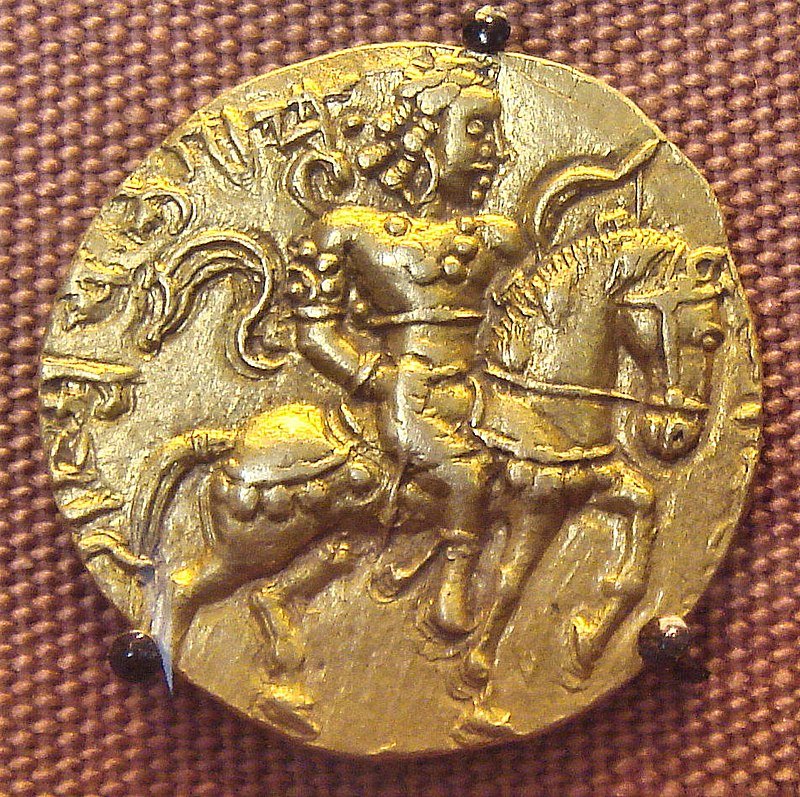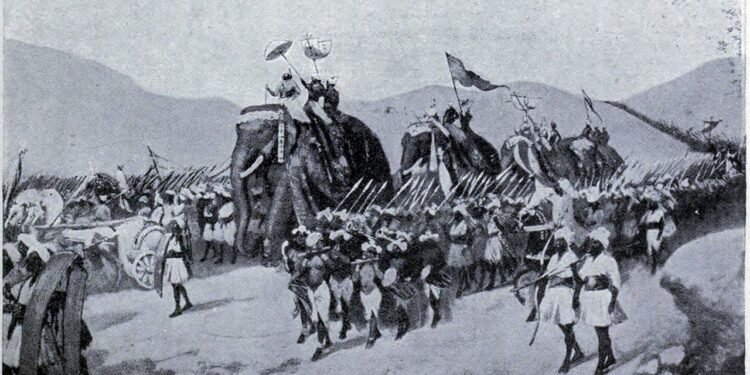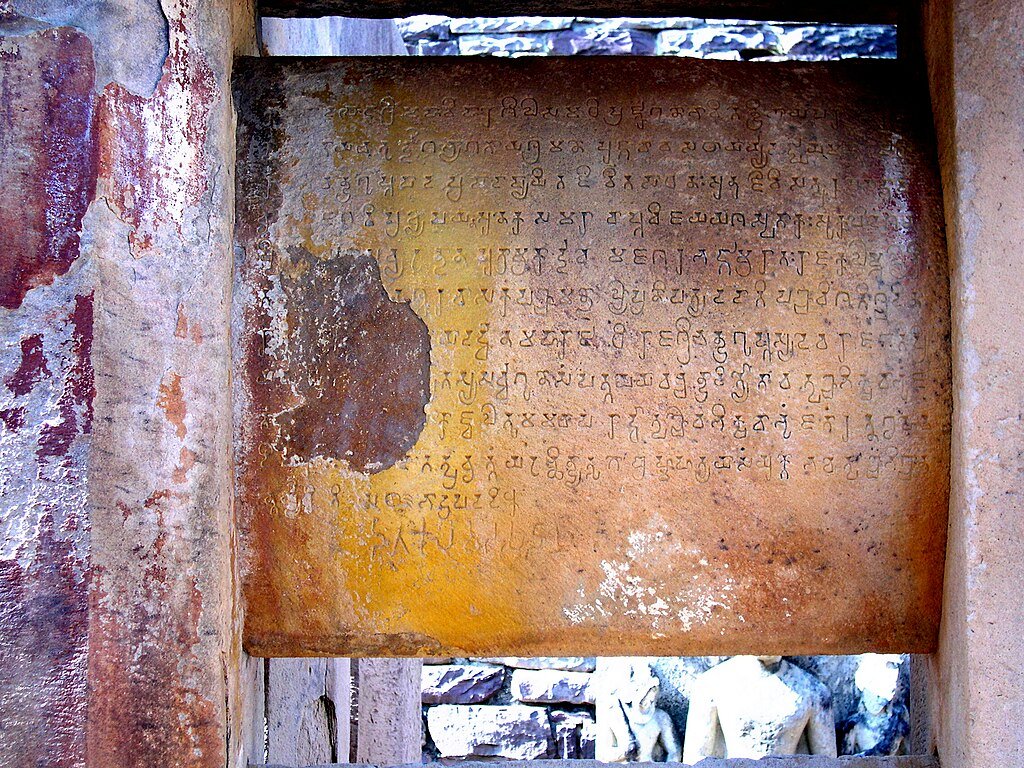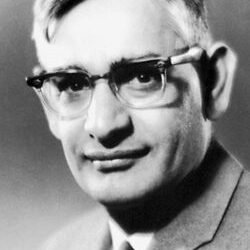Introduction
Chandragupta II (c. 375–414/15 CE) led the Gupta Empire through its most expansive and prosperous phase by dismantling the Western Kshatrapas, securing the Arabian Sea littoral, and integrating western trade into a Ganga‑valley core centered on Ujjain and Pataliputra. His reign standardized coinage across annexed zones with the first Gupta silver series, preserved internal order noted by Faxian, and projected the Vikramaditya ideal of a victorious, just, and cultured monarch. Inscriptions such as the Mehrauli Iron Pillar and a prolific coinage corpus anchor his chronology, titles, and policy priorities, while alliances—especially with the Vakatakas—secured the Deccan flank during western offensives.

Political ascent and platform
Chandragupta II inherited a stable core from Chandragupta I and the momentum of Samudragupta’s layered expansion—direct annexations in Aryavarta and tributary suzerainty beyond—which delivered pliant peripheries ready for integration. The Western Kshatrapas still dominated Malwa–Gujarat, mediated seaborne trade, and issued the region’s prevailing silver coinage, constraining imperial reach and revenue from the western seaboard. Chandragupta II’s approach combined decisive warfare in the west with marital diplomacy in the Deccan (Prabhavatigupta’s marriage into the Vakatakas), ensuring central Indian stability and logistical depth without overextension.
Western Kshatrapas and the maritime turn
Defeating the Western Kshatrapas reoriented Gupta statecraft toward the sea by bringing Malwa–Gujarat and ports such as Bharuch (Broach) and Sopara under imperial control. With maritime gateways secured, western customs, bullion inflows, and craft exports were channeled through Ujjain’s market networks into the Ganga heartland, strengthening treasury and provisioning capacity. The victory underwrote the epithets Śakari (vanquisher of Śakas) and Vikramaditya, signposting the end of Kshatrapa political–monetary dominance and the rise of a cosmopolitan, sea‑facing Gupta order.
Ujjain, inland routes, and administrative reach
Control of the western littoral elevated Ujjain as a second capital alongside Pataliputra, anchoring a west–east commercial spine linking ports, caravan routes, and river corridors. From Ujjain, textiles, beads, and metalwork moved coastward while wine, coral, glass, and bullion circulated inland, stabilizing prices and facilitating tax collection in bhuktis (provinces) and vishayas (districts). Administration retained a recognizable Gupta structure: the king and mantriparishad at the center, Uparikas over provinces, Viṣayapatis/Ayuktas over districts, and Kumāramatyas linking court and countryside—lighter than Mauryan centralism but effective through elite cooperation and robust revenue circuits.
Alliances and the Vakataka flank
The Vakataka alliance—cemented through Prabhavatigupta’s marriage and long regency—secured passage, reduced frontier friction, and allowed Gupta suzerainty to radiate across central India without the administrative costs of annexation. This layered geometry extended beyond the Deccan: frontier chiefs and residual Śaka–Kushana formations in the northwest were incorporated through tribute and recognition of Gupta authority where direct rule offered limited returns. By combining hard annexation in the west with cooperative suzerainty elsewhere, Chandragupta II preserved military bandwidth for priorities that most improved fiscal and strategic leverage.
Coinage and monetary integration
Chandragupta II introduced the first Gupta silver issues (rupaka/drachm) in the annexed west on Kshatrapa prototypes, replacing their legends and symbols with Gupta emblems to assert sovereignty while easing market acceptance. In parallel, abundant gold dinars extended type‑sets—archer, lion‑slayer, tiger‑slayer, and devotional motifs—projecting a dharmic, potent kingship and facilitating high‑value payments across the core. The silver program standardized weight and fineness for salaries, taxes, and trade in newly integrated zones, while gold sustained interregional trust and long‑distance exchange—monetary policy as governance that fused legitimacy with liquidity.
Order, prosperity, and Faxian’s window
The Chinese pilgrim Faxian, who traveled during Chandragupta II’s reign, observed safe roads, lenient penal practices, active Buddhist sites, and broad prosperity—evidence of predictable governance and buoyant commerce. Such stability rested on secure routes from ports to inland markets, coinage that met merchant needs, and provincial coordination that balanced royal oversight with local elite cooperation. In this climate, urban centers flourished and the state could fund defense, ritual, and public works at scale while maintaining social peace.
Inscriptions, titles, and cultural memory
The Mehrauli Iron Pillar inscription (Delhi) praises a king whose arms secured sovereignty and whose fame reached “the southern ocean,” a profile widely linked to Chandragupta II’s achievements and ambit. Titles such as Vikramaditya and Śakari distilled policy outcomes into public ideals—victory, justice, and order—while later literary memory placed luminaries like Kālidāsa at his court, even though the canonical “Navaratna” roster is a later construct rather than a verified single cohort. Nonetheless, the Vikramaditya archetype—warrior‑king and patron—owes its most persuasive historical anchor to Chandragupta II’s reign.
High‑yield anchors
Core dates and profile: Chandragupta II c. 375–414/15 CE; apex of Gupta power and prosperity; titles Vikramaditya and Śakari.
Western victory: Western Kshatrapas defeated; Malwa–Gujarat incorporated; ports Bharuch and Sopara captured; Ujjain rises as second capital.
Monetary reform: First Gupta silver coins issued on Kshatrapa model with Gupta emblems; prolific gold dinars continue and diversify.
Governance and society: Stable administration with provinces (bhuktis) and districts (vishayas); elite cooperation and trade‑fed revenue; safe roads and prosperity attested by Faxian.
Alliances: Vakataka marriage and regency secure the Deccan flank; layered suzerainty with frontier chiefs and residual Śaka–Kushana elements.
Epigraphic anchor: Mehrauli Iron Pillar inscription echoes imperial reach and martial legitimacy.
Conclusion
By breaking Śaka power, suturing the Deccan through alliance, unifying western and inland markets via coinage reform, and maintaining civil order that impressed foreign observers, Chandragupta II forged the Gupta Empire’s most mature imperial synthesis. His reign shows how maritime access, monetary integration, and measured suzerainty can multiply a heartland’s strength, while the Vikramaditya ideal cast his kingship into a lasting cultural template for victory joined to justice.





